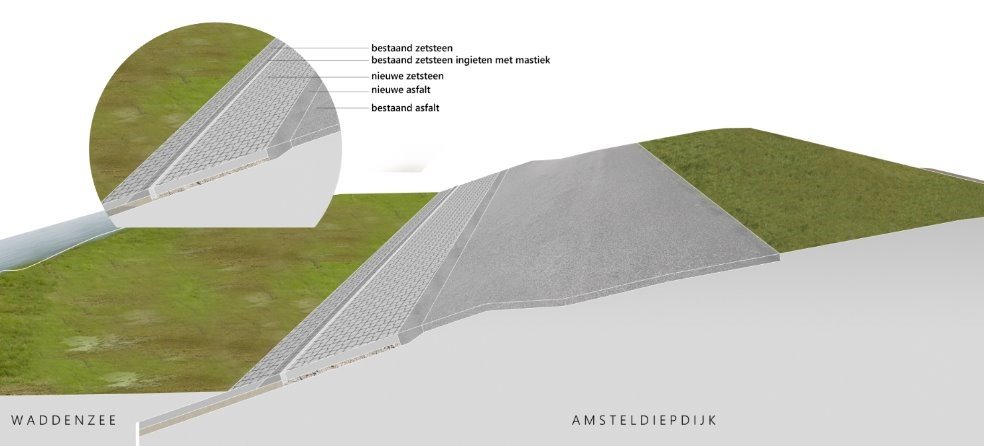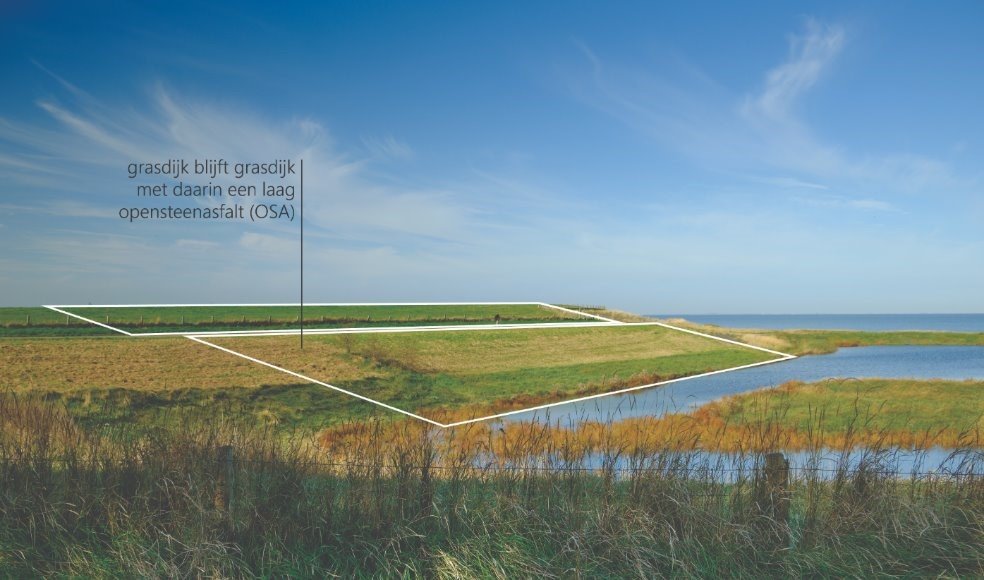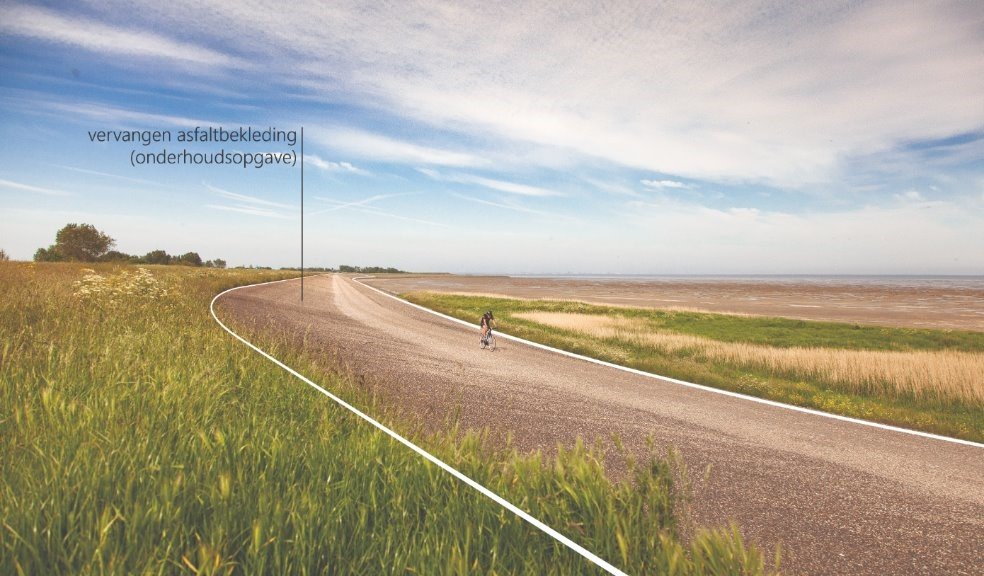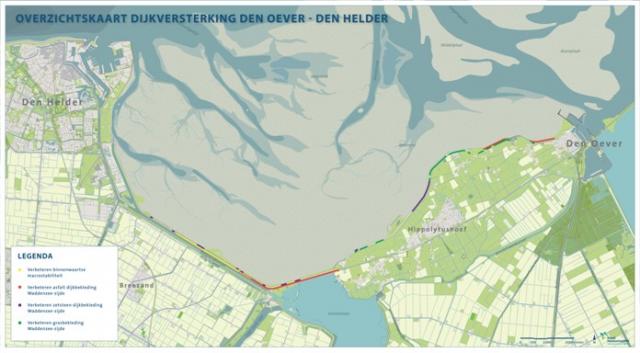Dike reinforcement Den Oever-Den Helder
The Wieringer Zeewering, Amsteldiepdijk and Balgzanddijk protect over 1.2 million North Hollanders from high water. In some places they no longer meet the latest safety requirements. That is why the high water board is working on strengthening the dikes. The design is now ready and a draft project decision with an environmental impact report (MER) has been drawn up. This describes the approach to the reinforcement and the consequences for the surrounding area.
Invitation to consultation hours
From October 24, 2025 to December 4, 2025, the draft project decision, environmental impact report (EIR) and draft environmental permits for the Den Oever - Den Helder dike reinforcement will be available for inspection.
To answer questions about the plans and permits, we are organizing two consultation hours.
Walk-in at the Village Hall Westerland
Date: Tuesday, November 4,
Time: 4:00 - 7:00 p.m.
Location: Westerland Village Hall, Westerlanderweg 61, 1778 KM Westerland
Digital consultation
Date: Wednesday, November 19,
Time: 7:00 - 9:00 p.m.
Location: Online via Microsoft Teams:
Participate in digital consultation
What is on display?
During the inspection period, you can comment on:
- The draft project decision for the dike reinforcement;
- environmental impact assessment (EIA);
- the draft environmental permits:
- Environment plan activity performing works (Municipality of Hollands Kroon is competent authority;
- Building environmental plan activity (municipality of Hollands Kroon is competent authority);
- Water activity (Rijkswaterstaat is competent authority);
- Natura 2000 activity (Province of North Holland, outsourced to Omgevingsdienst Noord-Holland Noord is competent authority);
- Flora and fauna activity (Province of North Holland, outsourced to the North Holland North Environmental Service.
Where can you find the pieces?
The documents will be available digitally from Oct. 24 via:
- Waterschapsblad: Draft project decision, EIR and appendices.
Waterschapsblad | Overheid.nl > Official Announcements - Provincial gazette: draft environmental permits
Provincial gazette | Government.com > Official notices - Rules on the Map: Digital viewing via interactive Map
Rules on the Map - Environment Desk
You can also physically view the documents:
- at Hoogheemraadschap Hollands Noorderkwartier, Stationsplein 136, Heerhugowaard (by appointment only by calling 072 - 582 8282 or by e-mail to dijkversterkingdodh@hhnk.nl, quoting case number 1092901);
- at Provincie Noord-Holland, Houtplein 33, Haarlem (by appointment only by calling 023 - 514 4440 or by e-mail to info.div@noord-holland.nl, quoting case number 1092901).
How can you respond?
You can submit a view in three ways:
- Digital - send an e-mail to post@noord-holland.nl
- By mail to:
Gedeputeerde Staten van Noord-Holland
Postbus 3007
2001 DA Haarlem - Oral - by phone or at the county office (after making an appointment to do so by calling 023 - 514 44 40 or emailing info.div@noord-holland.nl)
Please include the following information in your view:
- the subject: 'Coordinated procedure/draft project decision Dike reinforcement Den Oever - Den Helder';
- case number: 1092901;
- Which draft decision your view is about;
- the date you respond;
- Your name and address information;
- What you think of the draft permits. For example, whether, in your opinion, they contain inaccuracies or overlook issues and/or interests. You can also indicate how these decisions affect your own interests and why. Of course, you can also raise other relevant issues.
For information on the content or procedure, please contact Province of North Holland. Call 023-514 44 40 or email info.div@noord-holland.nl quoting case number 1092901.
What happens next?
Everyone who submits a view will receive confirmation and later also notification of the response to it and the final decisions. Then there is the possibility to appeal to the Council of State.
Interested parties may also lodge an appeal without having first submitted an Opinion, although it is advisable to do so. For non-interested parties, they can only appeal if they have submitted an opinion, or if they had a good reason for not doing so. Note that you can only appeal rules that protect your interest.
Looking ahead to implementation
In the meantime, we will start preparing for the dike reinforcement. This will ensure that we can start work outside as soon as possible. The work is expected to start in 2028 and be completed in about three years.
Water safety tasks
| Failure mechanism | Description of failure mechanism | Balgzand dyke | Amsteldiepdijk | Wieringer Seawall |
|---|---|---|---|---|
| Inward stability (STBI). | The dike is not stable enough to resist high water. As a result, parts of the dike may shear on the land side, causing the dike to collapse. | 3.65 km | ||
| Asphalt lining water overprinting (ASP). | During high water, the water table inside the dike rises. When the water level outside the dike body drops rapidly, the water level inside the dike can cause a large pressure from the inside of the dike against the underside of the revetment. If the asphalt revetment cannot provide sufficient counter pressure, the dike collapses. | 1.60 km | 2.24 km | |
| Zetsteen lining (ZST). | Waves and currents can damage the different layers of bedrock. When the carpet pad erodes, the dike can collapse. | 3.25 km | ||
| Grass cladding (GEBU). | The grass revetment on the outer embankment may erode due to load from wave impacts or wave run-up. | 0.5 km | ||
| Asphalt cladding corrugations (AKG). | Repeated wave impacts on the asphalt revetment can cause cracks in the asphalt and cause the dike to fail. | 1 ,6 km |
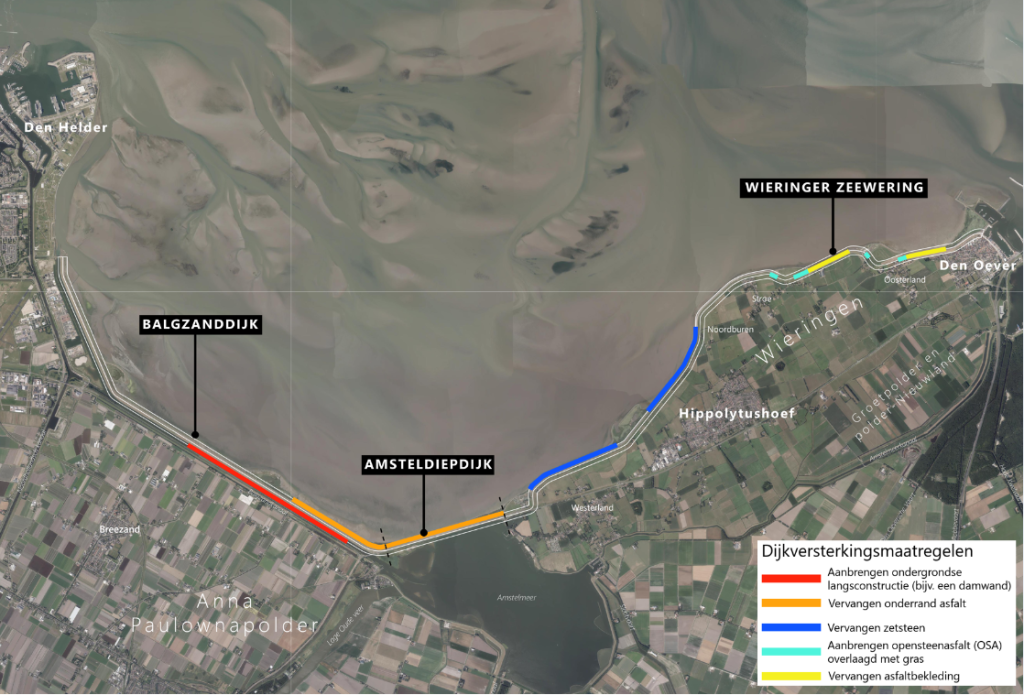
Contact
Do you live near the Den Oever-Den Helder dike reinforcement project or are you otherwise involved in this area? This news page will keep you informed of current developments surrounding the dike reinforcement.
For more information about this project, contact environmental manager Britte Mussche at 072 - 582 8282, dijkversterkingdodh@hhnk.nl or through the contact form.
Opinions, reports and notes
- Read aloud Participation plan 2021 with ReadSpeaker docReader
- Read aloud Notification further detailing participation 2021 with ReadSpeaker docReader
- Read aloud Notification of preferred alternative adopted with ReadSpeaker docReader
- Read aloud EIA committee opinion on scope and detail level 2018 with ReadSpeaker docReader
- Read aloud Press release committee on EIA interim test 2019 with ReadSpeaker docReader
- Read aloud Input note scope and detail level EIA 2018 with ReadSpeaker docReader
- Read aloud Notitie scope and detail level EIA 2018 with ReadSpeaker docReader

